Index
- Gainward GTX 650 Ti Boost Golden Sample reviewed
- Packaging
- A closer look at GS
- Testbed
- Nvidia Experience
- Crysis 3
- Hitman Absolution
- Metro 2033
- Sleeping Dogs
- Dirt Showdown
- 3DMark 11
- 3DMark
- Unigine Valley
- Unigine Heaven
- Gainward ExperTool II & Overclocking
- Thermals, Noise, Consumption
- Conclusion
- All Pages


Review: GTX 650 with wings
We already established that the new GTX 650 Ti Boost is a rather special part of the GTX 650 series. In fact, it is so different that it could have ended up with a different brand altogether. While plain GTX 650 cards struggle in 1080p gaming, the new Boost card seems more than able to churn out playable framerates in relatively fresh titles. Nvidia decided to use the Boost moniker because the new card features GPU Boost, which is missing from other GTX 650 cards. As the name suggests, GPU Boost allows the card to boost GPU clocks depending on load and temperature.
Today we will look at Gainward’s GTX 650 Ti Boost Golden Sample which comes with slightly upped performance thanks to some factory overclocking. It also features one specially designed dual-slot cooler which comes with two heatpipes and two 75mm fans. Gainward factory overclock is not as high as we’ve come to expect from a Golden Sample card, but it is possible that Gainward is saving a faster design for its Goes Like Hell series. The Golden Sample card features a base GPU clock of 1006MHz, while GPU Boost ups the clock to 1072MHz. The reference GTX 650 Ti Boost stock clock is 980MHz, with a typical boost clock of 1033MHz.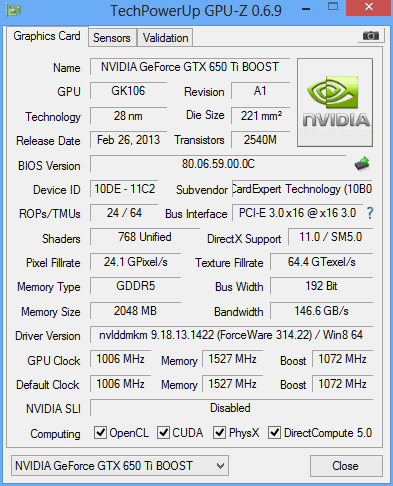
A simple clock boost with no additional changes would not have ensured the new Boost card a significant performance edge over the GTX 650 Ti. Luckily Nvidia had a few other tricks up its sleeve, so it widened the 128-bit memory bus to 192 bits, greatly improving bandwidth on the new card. Thanks to the new bus and faster memory chips, the new card has 66 percent more bandwidth compared to the plain GTX 650 Ti. The memory on the Golden Sample card is overclocked by 25MHz (effectively 100MHz), so even in terms of memory bandwidth it has a slight edge over the reference Boost card. The memory is easily overclockable, too.
The table below show specifications for the reference GTX 650 Ti Boost.
| GTX 650 Ti Boost | |
| Base Clock Speed | 980MHz |
| Typical Boost Clock | 1033MHz |
| OC Boost | 1100MHz+ |
| CUDA Cores | 768 |
| SMX Units | 4 |
| Memory speed | 6008MHz |
| Memory Subset | 192-bit |
| Memory Controller | 3x64-bit |
| Memory Capacity | 2048MB GDDR5 |
| Typical Draw (non-TDP Apps) | 115W |
| Typical Draw (non-TDP Apps) with slider at 110% | 127W |
| Power Connectors | 1x 6-pin PCIe |
| Length | 9.5” |
| Display outputs | 2x dual-link DVIs |
| HDMI | |
| DisplayPort |
Following the introduction of the GTX 650 Ti Boost, Nvidia’s complete Geforce 6xx lineup consists of the following cards:
Geforce GTX TITAN (GK110)
Geforce GTX 690 (2xGK104)
Geforce GTX 680 (GK104)
Geforce GTX 670 (GK104)
Geforce GTX 660 Ti (GK104)
Geforce GTX 660 (GK106)
Geforce GTX 650 Ti BOOST (GK106)
Geforce GTX 650 Ti (GK106)
Geforce GTX 650 (GK107)
Geforce GT 640 (GK107)
Geforce GT 630 (re-branded Geforce GT 440)
Geforce GT 620
Geforce GT 610
The box has mid-range written all over it. It is not too big, but it’s not small either. The design is pretty nice. You will get one 2x-molex to 6-pin power connector, DVI to VGA dongle, user guide and a driver CD.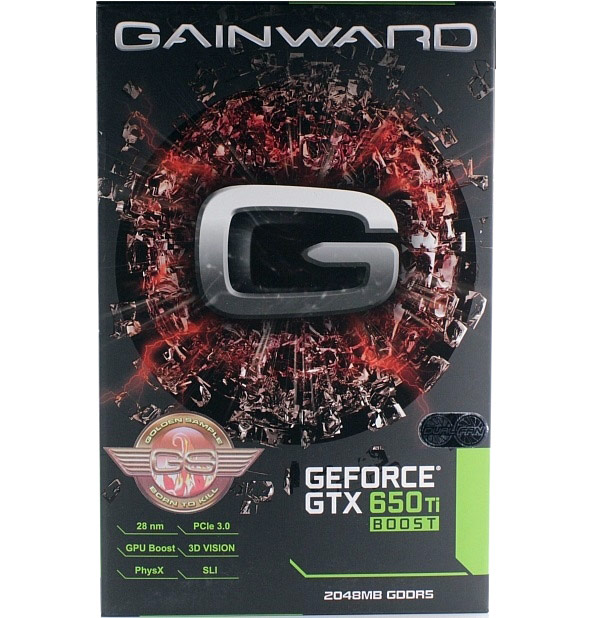
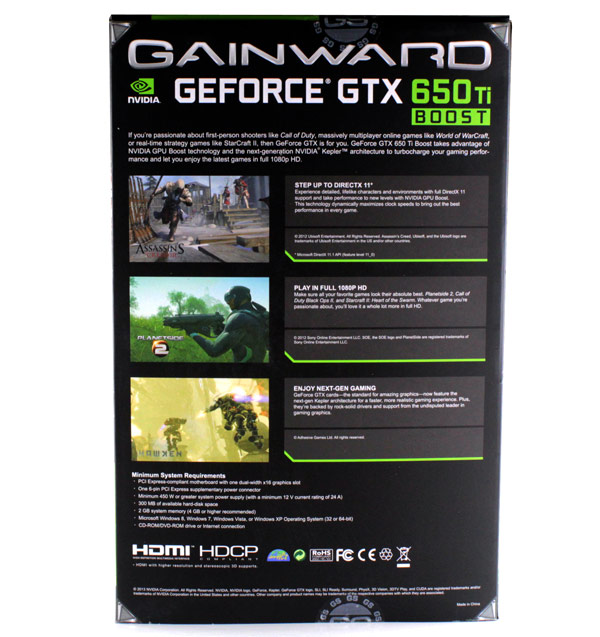
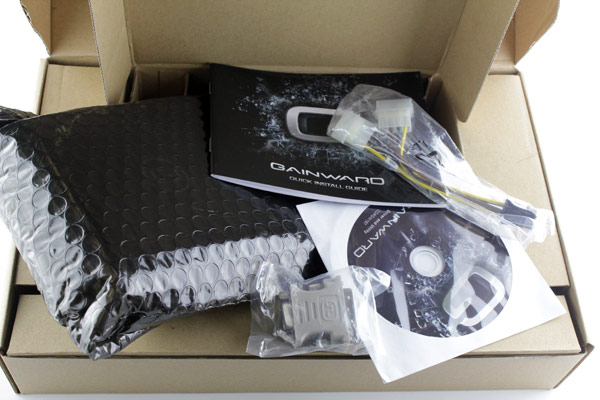
Gainwards’s GTX 650 Ti Golden Sample graphics card is factory overclocked, but since we are talking about a slight overclock, the dual fan custom cooler is the main selling point. The cooler looks like it should have no trouble keeping the temperatures and noise in check. We’re talking about a dual-slot cooler with a large heatsink and two heatpipes, with two powerful 7.5cm fans on top.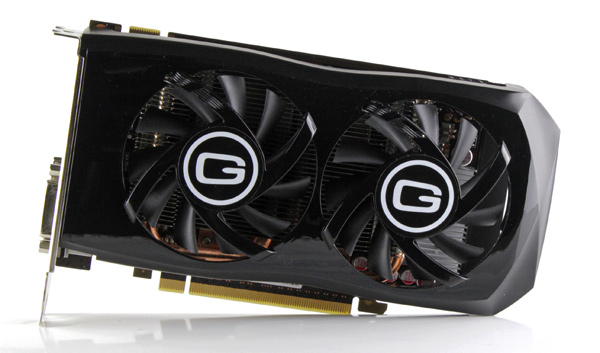
The GTX 650 Ti Boost GS’ cooling has huge air vents, which improve airflow through the heatsink. So, we’re talking about an open type approach, where fans are positioned over and blow directly at the heatsink, but this approach means that hot air will not be vented out of the chassis. Adequate airflow is necessary to ensure the best possible cooling, but it’s nothing that a few quality intake fans won’t effectively nullify.
Reference cooling employs a radial, blower style fan that pushes the air through the heatsink, dissipating heat from the GPU outside the case through slits in the bracket.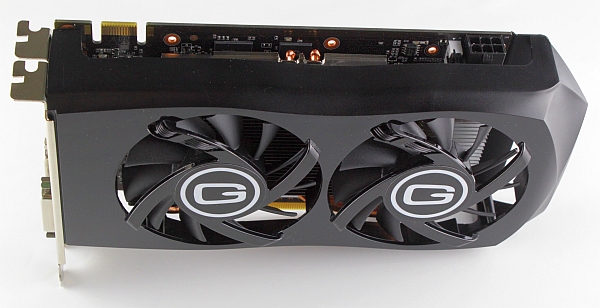
The card is about 20.5cm long while the reference card is about 24cm long. GTX 650 Ti Boost GS is powered via one 6-pin power cable.
The Hynix memory modules, designated H5GQ2H24AFR-R0C, are specified to run at 1500MHz (6000MHz GDDR5 effectively). Gainward’s GTX 650 Ti Boost Golden Sample packs a total of 2GB of GDDR5, in eight memory modules and the memory runs at 1527MHz (6108MHz effectively). Four of the modules are placed on the back. The 192-bit memory bus, coupled with 6108MHz GDDR5, ensures plenty of bandwidth for the GPU. This is the same memory we saw on the GTX 670 Phantom.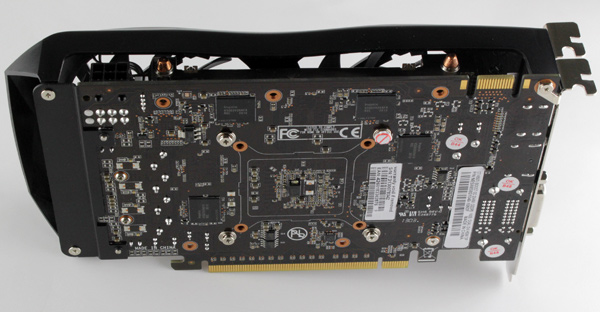
Nvidia limited the GTX 650 Ti Boost and GTX 660 to dual-card SLI, while faster cards in its lineup support triple SLI. This really isn’t an issue in this price segment. The standard GTX 650 Ti does not have an SLI connector or SLI support for that matter.
Video outs include two dual-link DVIs (only one is VGA capable), standard HDMI and standard DisplayPort connector. All four outputs can be used simultaneously.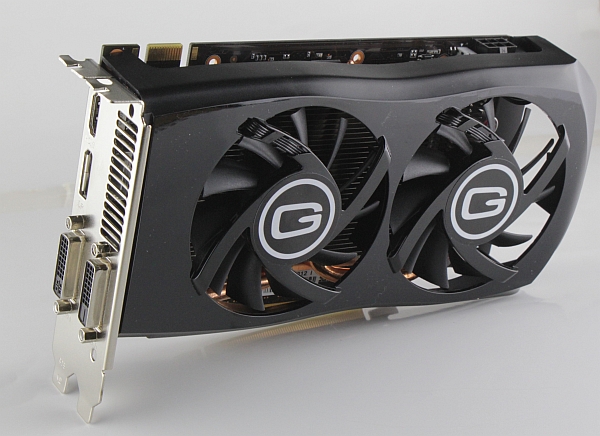
As usual, we tested all the games at maxed out detail settings. However, in games that prove unplayable at such settings in 1920x1080, we reduced the detail settings to High. The GTX 650 Ti Boost is supposed to hit the sweet spot for gamers on a budget, who still don’t want to miss out on 1080p gaming.
Testbed:
- Motherboard: EVGA Z77 FTW
- CPU: Ivy Bridge Core i7 3770 (4.5GHz)
- CPU Cooler: Gelid The Black Edition
- Memory: 8GB Corsair DDR3 2400MHz
- Harddisk: Corsair Neutron GTX 240GB
- Power Supply: CoolerMaster Silent Pro 1000W
- Case: CoolerMaster Cosmos II Ultra Tower
- Operating System: Win8 64-bit
Drivers:
- Nvidia 314.22-whql
- AMD 13.3_Beta3
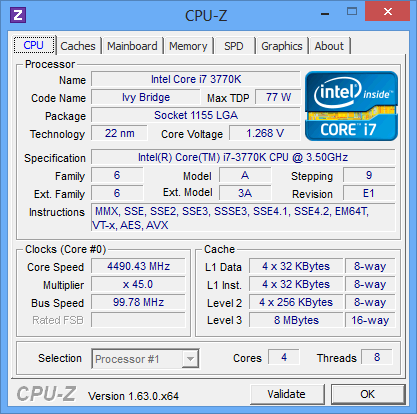

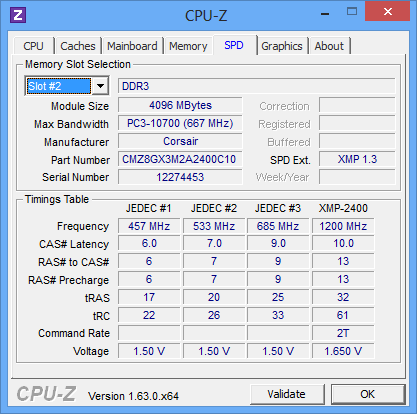
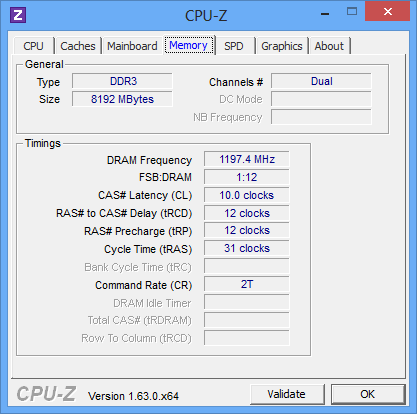
Geforce Experience is a new application from Nvidia that optimizes your PC in two key ways. First, Geforce Experience automatically notifies you of new Nvidia drivers and downloads them for you. Second, Geforce Experience optimizes graphics settings in your games based on your hardware configuration. Nvidia performs extensive game testing for various combinations of GPUs, CPUs, and monitor resolutions and stores this information in the Nvidia cloud. Geforce Experience connects to the Nvidia Cloud and downloads optimized game settings tailored specifically to your PC. The result is that your PC is always kept up to date and optimized for the latest games. Geforce Experience optimal settings are currently based on single GPU setups.
However, we doubt that anyone willing to invest in an SLI gaming rig will need Geforce Experience to begin with, as it target audience are not enthusiasts.
Following installation, you will be asked whether you want Geforce Experience to scan your system and find games suitable for your hardware. Only games that Geforce Experience has optimal settings for and are found on your computer will show up in the games list. Geforce Experience provides optimal settings for these games. Check to make sure your game is supported.
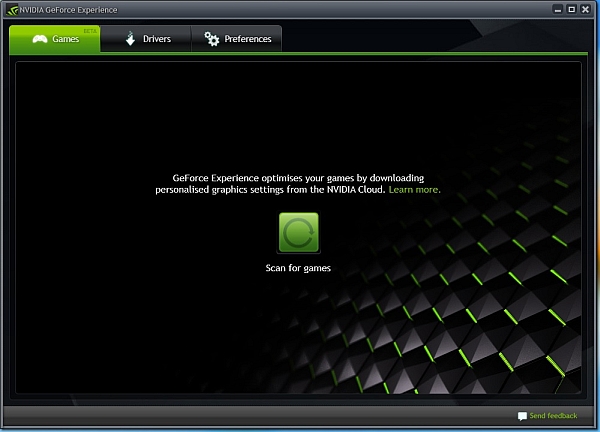
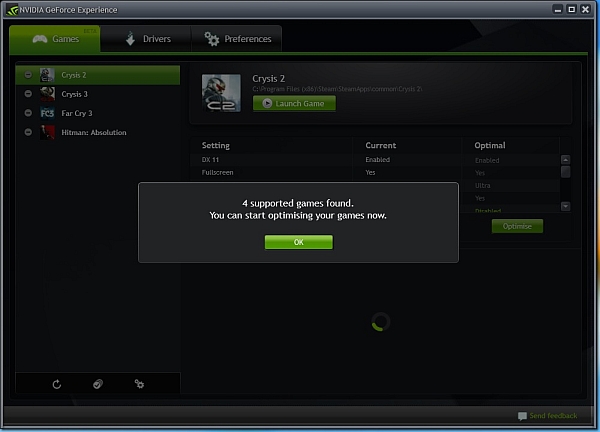
In case one of your games should be supported by Geforce Experience, but it is not on the list, it is probably because the software uses locations specified in the Preferences —> Games tab to find games. Add the location where your game is installed and you’ll be good to go.
GeForce Experience targets 40 FPS (average) for its optimal settings. For example, we set Crysis 3 to Very High detail levels, but using these settings we got about 19 FPS. Geforce Experience realized that the settings are not optimized for our hardware and suggested to take care of it. We accepted the kind offer, but we were rather amused when Geforce Experience suggested we increase the resolution to 2560x1600. Needless to say, the higher resolution was supported by our monitor. We decided to give it a go anyway and Geforce Experience really managed to optimize in-game settings and hit a 35 FPS average in 2560x1600.
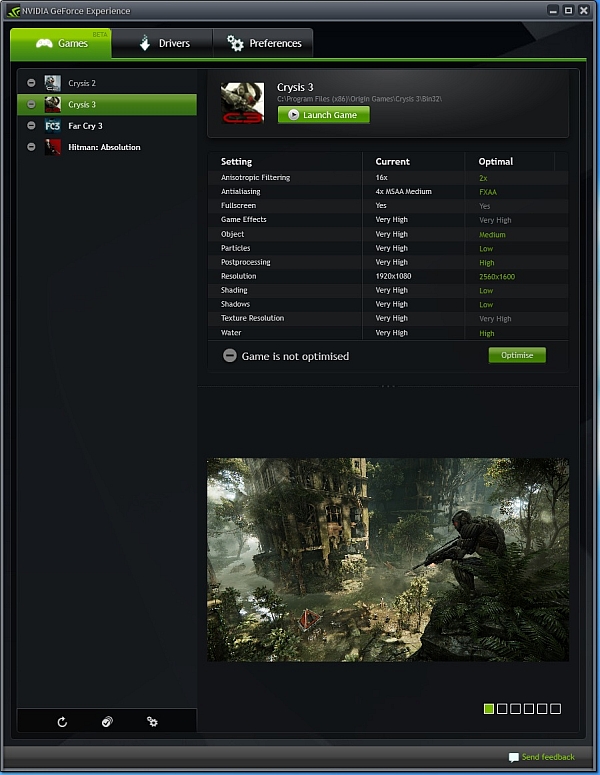
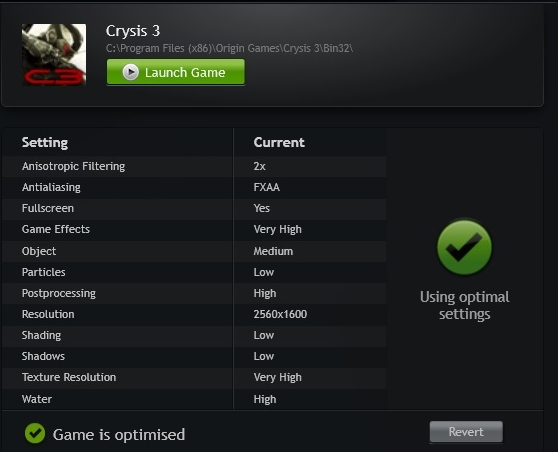
For users who don’t know what Geforce Experience does in the background there is a simple display of examples, which should guide users through the process. As usual,it is a game of trade-offs, balancing image quality against resolution and
performance.
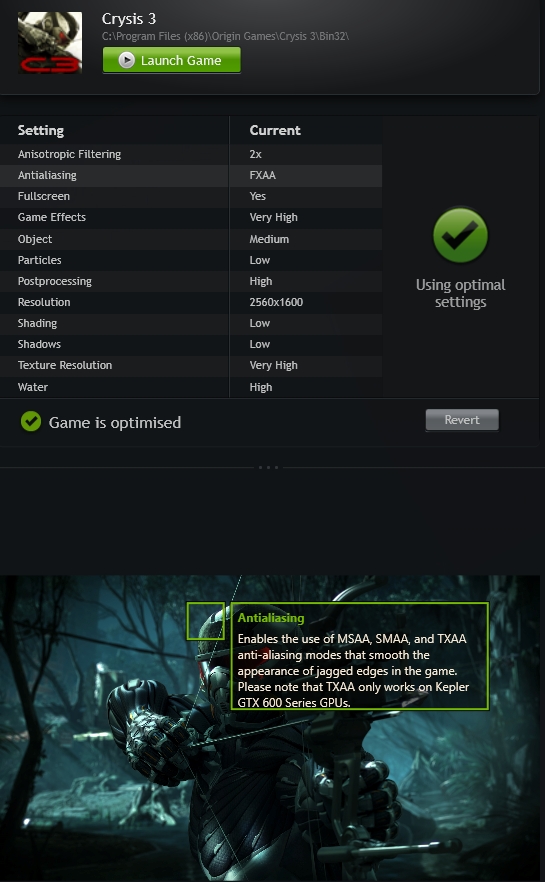
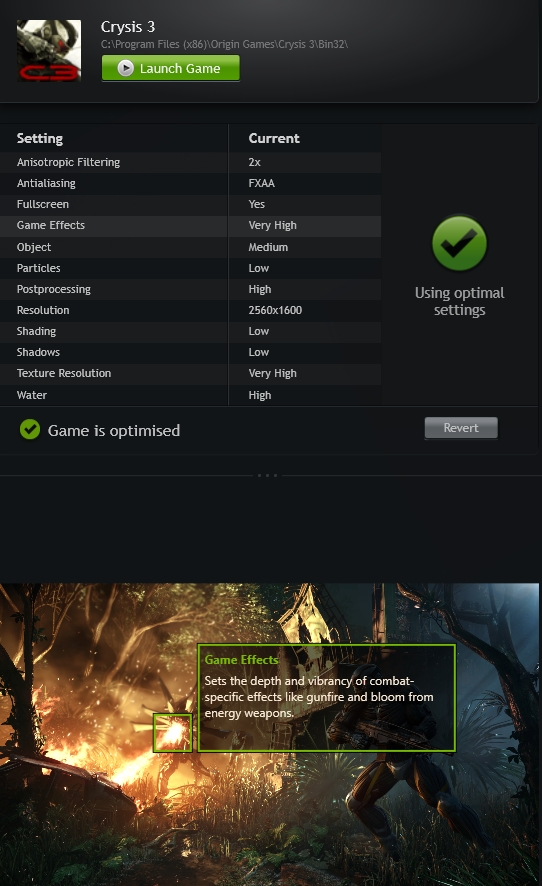
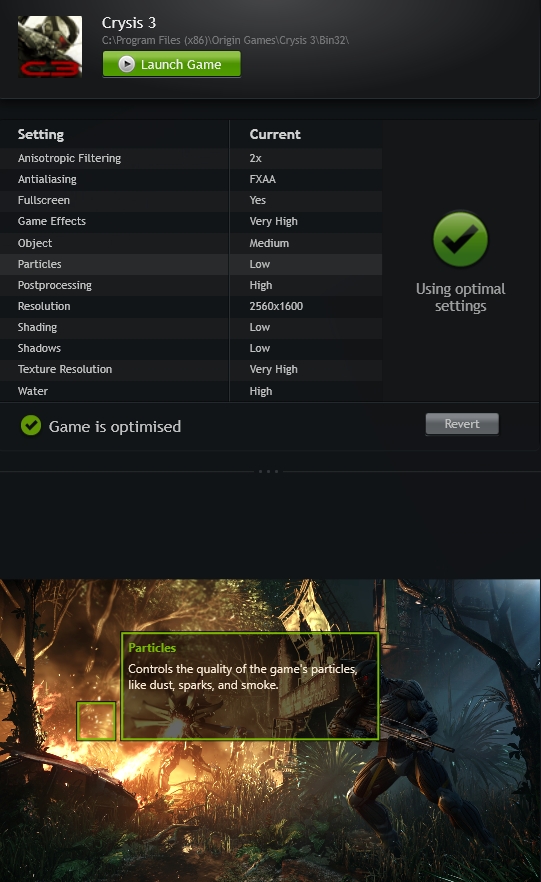


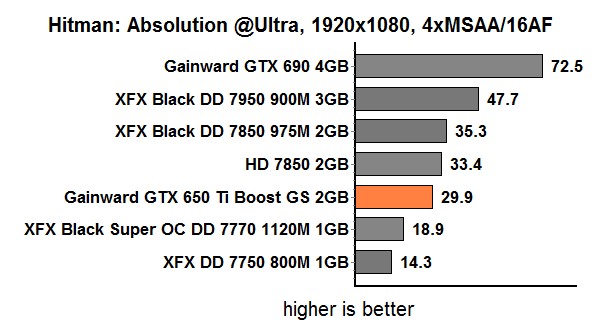
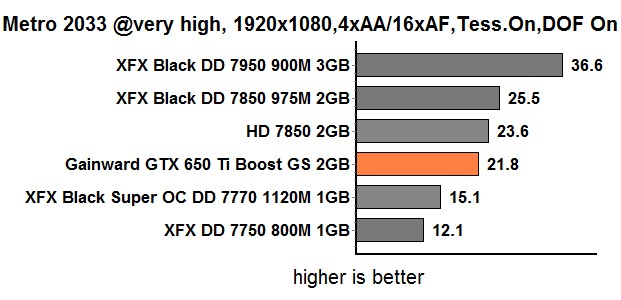

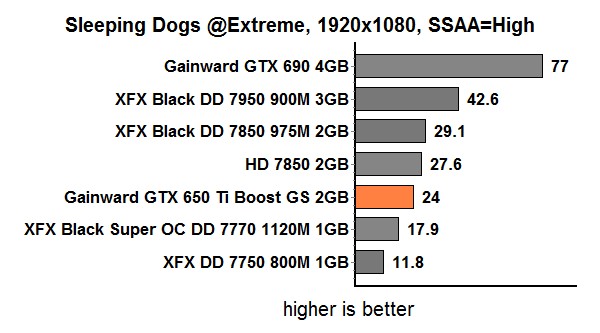
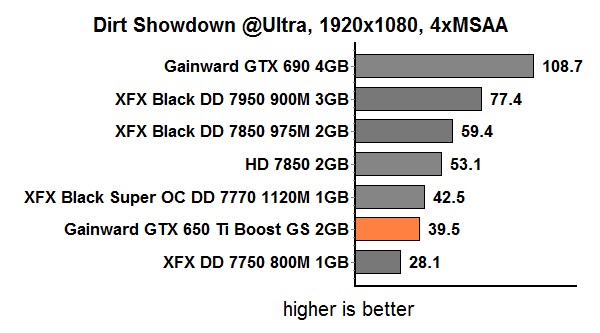
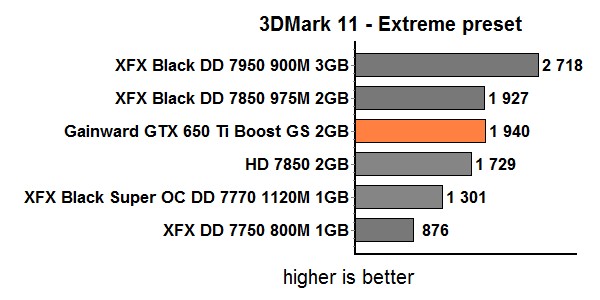
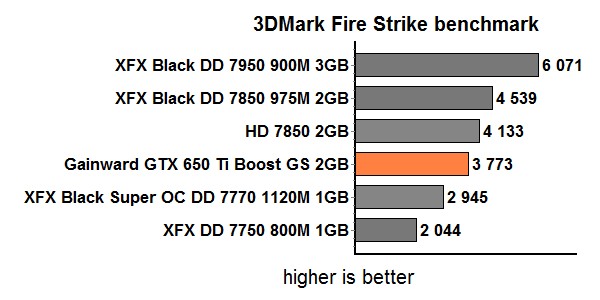
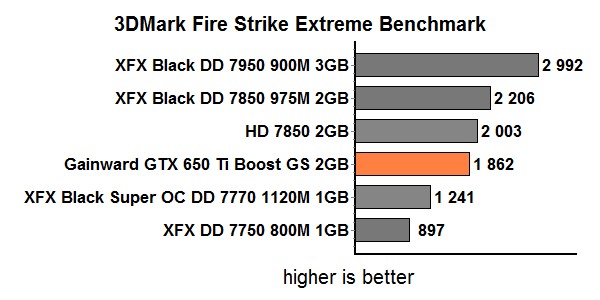
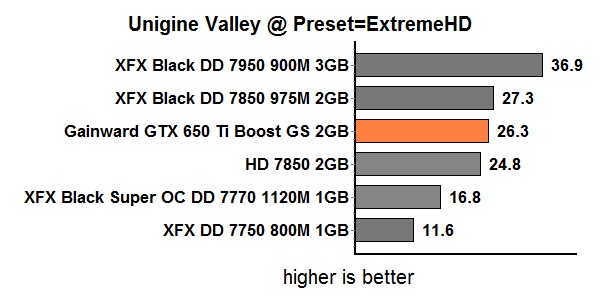
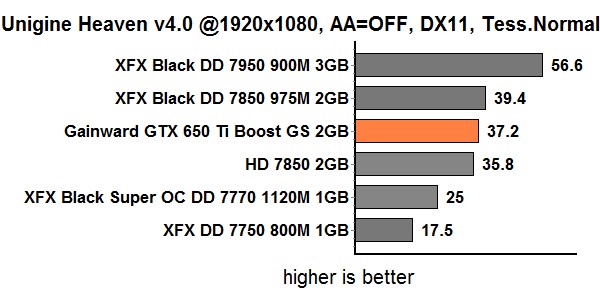
Gainward has been developing its own monitoring and overclocking tool for years and ExperTool is now in version II. It supports overlocking Kepler based cards, it displays sensor readouts and allows for simple fan RPM control. It looks much better than the previous versions as well. The current 8.9 version also supports Frame Rate Target, which wasn’t featured in the original ExperTool II release.

The status monitor is a welcome addition to any tool, but the sensor readings in the graphs only allow for real time readings. It is not possible to chart sensor readings over a certain period, which could come in handy. In any case the key readouts reveal some important information about the card.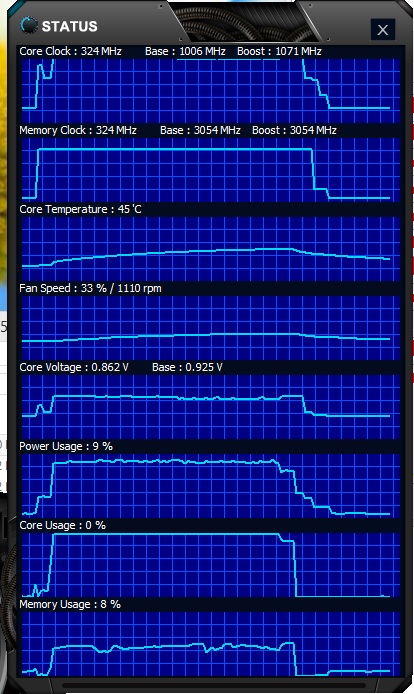

Clicking Overclock G button opens up a new window, where users are free to set their OC parameters. The overclocking results we got were nothing spectacular. The GPU was stable with a base clock set at 1100MHz, but as soon as we hit 1150MHz we encountered some stability issues. We managed to take the clock up from 1527MHz to 1700MHz with ease.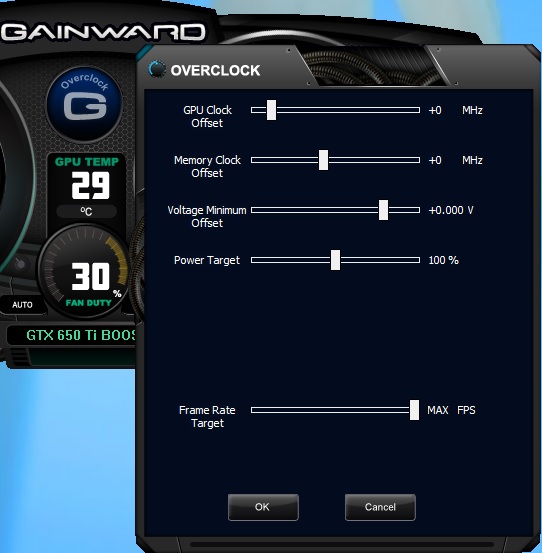

Like we said, the factory overclock seems to have been relatively conservative and not what we’ve come to expect from Golden Sample name. The thermals could have been a factor in Gainward’s decision to keep the clocks low. The fan is relatively quiet even when the card is experiencing a lot of load, and when it is idling it is silent. However, heavy loads can result in some airflow noise and we wouldn’t recommend the card to anyone who is fanatical about system noise. Most users probably won’t mind, as the card is still quiet enough not to draw attention, at least in my personal experience. 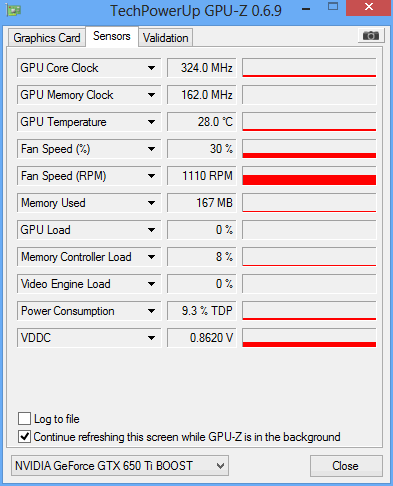
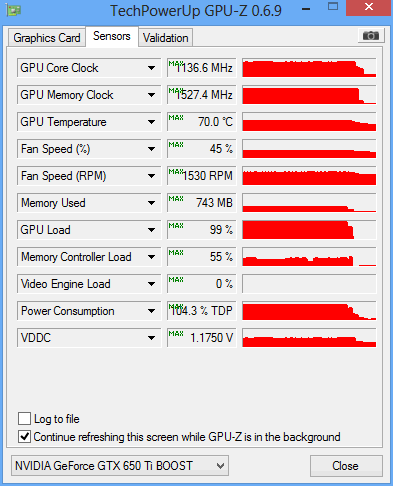

In terms of power consumption, the GTX 650 Ti Boost Golden Sample does rather well. The EVGA GTX 650 Ti Superclocked, which offers slightly more performance due to higher factory overclocking, consumes also a bit more power.
The typical power draw for the reference card in so-called non-TDP apps is 115W. Nvidia claims the TDP is 140W. If we take the power slider to 110 percent, as is recommended for overclocking, we hit 127W in non-TDP apps. Gainward’s GTX 650 Ti Boost Golden Sample is powered through the PCIe slot and 6-pin power connector, and it could theoretically draw up to 150W. That means there is more than enough headroom for overclocking. In any case GPU Boost should keep power consumption in check and throttle the clocks accordingly. We measured system consumption, without the monitor, of course.

Geforce GTX 650 Ti Boost is a strange beast, but Nvidia’s tinkering engineers managed to plug the performance and price gap between the GTX 650 Ti and GTX 660 pretty well. The Geforce GTX 650 Ti Boost graphics card delivers the usual feature set, but it also offers a few advantages over the plain GTX 650 Ti, such as SLI support and GPU Boost.
The GTX 650 Ti Boost and AMD’s HD 7850 are a very close match, both in terms of price and performance. The results are very close indeed and the choice between the two cards really comes down to the sort of games you prefer. Judging by the close results it looks like the crown may very well be decided by new drivers. It is also worth noting, however, that the GTX 650 Ti Boost makes plain GTX 650 cards look a lot less appealing.
Gainward’s GTX 650 Ti Boost Golden Sample doesn’t just look good on paper, it also performs quite well. The card is able to deliver high visual quality in games at 1920x1080, with in-game detail settings cranked all the way up to High. The cooler is not loud and it packs an arsenal of video outputs, which should be more than enough for everyone. Although the overclocking potential of the GPU doesn’t seem too impressive, bear in mind that this is still a factory overclocked card, and memory clocks are very easy to play around with.
Of course, price plays a huge role in the mid-range market segment and in this case it is rather tempting. In fact, we dare say that Gainward’s new Golden Sample is one of the best graphics cards you can get for less than €170 today.
k



